Technology
NBA’s Summer League A Hot Bed of AI, Immersive Innovation Testing
The NBA Summer League is into its final week and with it the last few days when the NBA teams get a chance to evaluate rookie and young talent and when the media operations and technology team can test out new production gear, workflows, and more. “Summer League is one of our key opportunities to […]
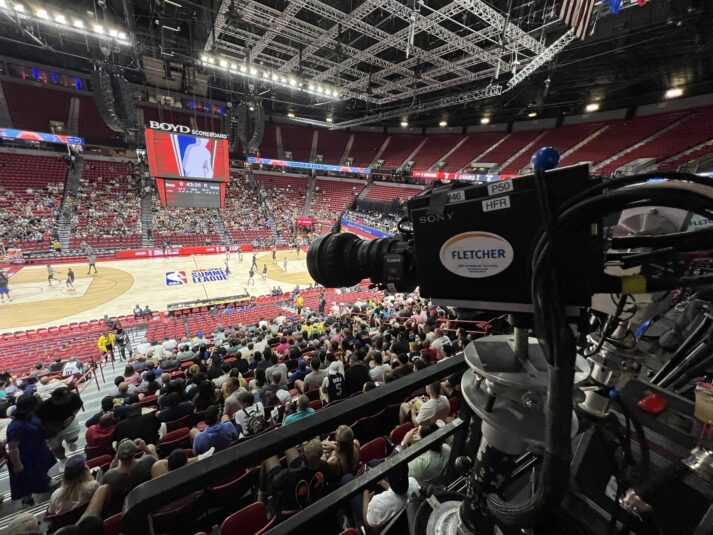
The NBA Summer League is into its final week and with it the last few days when the NBA teams get a chance to evaluate rookie and young talent and when the media operations and technology team can test out new production gear, workflows, and more.
“Summer League is one of our key opportunities to really push boundaries of innovation, and we’re always thinking about how we can set ourselves up for future success alongside our partners,” says Ken DeGennaro, NBA, EVP, Media Operations and Technology. Among the highlights this year for the NBA is experimenting with multiple avenues of AI workflows that can not only consume and understand our very data enriched video feeds but also react and augment.
“All of this is still in the early stages, but being able to quickly contextualize and respond to live moments will be a true gamechanger for our content teams,” he says. “Our broadcast engineering team has been leading the charge on these initiatives, and we’re excited about the possibilities.”
Among the efforts are AI-driven event detection to audio mixing powered by EDGE Sound Research as well as intelligent camera framing through NEP Specialty Capture.
“We’re leveraging artificial intelligence to enhance both the quality and scalability of our workflows,” he adds. “These tests are helping us explore how AI can be intentionally integrated to streamline operations and elevate the production experience.”
EDGE Sound Research, for example, is working with Shure to make audio coverage of what is happening on the court more immersive and impactful.

A Shure Array microphone is being tested at the NBA Summer League.
“Leveraging cutting-edge hardware and software, we aim to bring fans closer to the game by amplifying iconic on-court sounds—like the squeak of sneakers and the swish of the net—while reducing background noise from in-venue music and horns. This initiative is designed to make every moment on the court feel more immersive, authentic and connected.”
Those tests use NBA Player Tracking Data to automatically generate a sub-mix, dynamically adjusting based on the positional data of players and other objects on the court. Another test, says DeGennaro, explores a more hands-on approach, where these audio objects are made available to a sub-mixer for manual control—allowing for greater creative input and flexibility in the mix.
With respect to on-the-court video coverage enhancements, DeGennaro credits Victor Cerejo, NBA Broadcast Strategy and Technology Support and the rest of the production team with driving the efforts.
“Spalding, the official manufacturer of our Renegade stanchions, has facilitated new camera positioning within the main column of the stanchion arm,” he explains. “We’re utilizing cameras such as the Nucleus and Proton and working closely with folks at Cosm and NEP Specialty Capture to identify solutions for this new position and evaluate all the new baseline views at our disposal.”
DeGennaro says a small square cutout in steel may not feel all that notable from the stands, but that seemingly small changes really do impact new ways of showing on-court action.
“As camera technology continues to shrink in size, the demand for access around the basket stanchion has grown significantly,” he says. “We’re now supporting a wide range of needs—from our broadcast partners and photographers to social and digital content teams. Currently for marquee events such as the NBA All Star Game and Finals, there are more than ten cameras strategically positioned above the rim, behind the glass, below the rim, and even at the base of the stanchion.”
Despite all those already existing angles he says the volume of requests continues to grow.
“We’re exploring the introduction of a new camera position that offers a fresh angle for content capture—one that enhances storytelling while maintaining the integrity of the game experience,” he explains. “I have hopes this will become standard in the near future and inspire more ideas on how we can further innovate these core on-court elements for broadcast storytelling.”

NEP Specialty Cameras is part of AI testing workflows at NBA Summer League.
In addition to technical innovation, DeGennaro says the NBA is continuing to expand how it works with our partners at ESPN to reinvest in the industry. The NBA is advancing two interconnected initiatives through its collaboration with the NBA Foundation and Program Productions. One component offers hands-on experience for a local Technical Director, who will shadow cut a few Summer League games. In parallel, a behind-the-scenes tour is being organized for Team Inc., a Bay Area-based organization whose mission is to Train, Empower, and Mentor Black and Brown youth (ages 14–24) who are historically underrepresented in the sports and data analytics industries. Team’s goal is to help these young individuals secure meaningful careers in sports or related fields. Additionally, key ESPN staff members will engage with Team Inc. participants to share insights into career opportunities across both the production and technical sides of the industry.
“Thomas Kintner, Shane Smith, Alan McDonald, Kelley Nagi and the production, technical, and operations teams at ESPN are working with the NBA to find more ways to drive exposure and education around the industry for the next generation,” he says. “This includes connecting with students, speaking with them about employment opportunities and showing them around the truck.”
DeGennaro says each technology tested at the Summer League is selected because the NBA sees an opportunity to create solutions that can improve the production and/or fan experience.
“Our broadcast partners share our vision in so many ways and are trying to fill in similar gaps – that alignment is critical when it comes to driving efficiency when you consider the number of games that are played over the course of the 11 days,” he adds. “Everything we test out is intentional based on current goals and objectives that we are trying to solve for.”
And what does it take for technology to make the leap to being tested at Summer League?
“The set of criteria includes whether the technology can reasonably be implemented in a NBA game, how impactful it would be for the game presentation and our fans, and our ability to work the technology in at the Thomas & Mack Center without compromising any part of the unique in-person fan experience offered at Summer League,” adds DeGennaro. “These technologies and innovations that we test range across not just the live broadcast, but sometimes the way we play and officiate the game as well. This year, executing the basket stanchion camera across multiple vendors on both the Basketball and Technology sides is a perfect example of what we can accomplish when we work together.”
Technology
Cambridge United to Host TechGirl Festival 2025
Cambridge United will host the TechGirl Festival 2025 on 28 August in partnership with UK-based tech network HotTopics. The event aims to mentor young women aged 16–21 through direct engagement with senior technology executives, culminating in a practical competition to enhance the club’s match day operations. Participants will develop solutions to improve ticketing systems, fan […]

Cambridge United will host the TechGirl Festival 2025 on 28 August in partnership with UK-based tech network HotTopics. The event aims to mentor young women aged 16–21 through direct engagement with senior technology executives, culminating in a practical competition to enhance the club’s match day operations.
Participants will develop solutions to improve ticketing systems, fan experience, and food and beverage processes — areas of increasing commercial importance for sports organisations seeking to optimise revenue streams and match day satisfaction.
Combining Inclusion with Innovation
While positioned as an inclusion and empowerment initiative, the festival also functions as a targeted ideation lab for Cambridge United, offering fresh perspectives on customer experience challenges. This dual purpose reflects a growing industry trend in which community-focused programmes are leveraged to deliver commercially applicable innovations.
CEO Alex Tunbridge connected the initiative to the club’s broader social impact agenda. However, the focus on technology-driven operational gains aligns closely with sector priorities such as digital ticketing adoption, queue management, and personalised fan engagement. These areas are increasingly critical as clubs seek to retain attendance and increase per-capita spend in a competitive entertainment market.
Action-Oriented Outcomes
HotTopics CEO Philip Randerson highlighted the program’s design, noting that the mentorship and project-based format is intended to produce tangible outcomes rather than limit activity to awareness-raising.
For rights holders, partnerships like the TechGirl Festival present dual benefits: delivering measurable community engagement for CSR reporting, while also contributing to strategic infrastructure and service improvements.
The initiative also serves as an informal talent pipeline, exposing participants to real-world operational challenges within a professional football club. By doing so, Cambridge United may help cultivate the next generation of technology professionals capable of operating within sports industry contexts.
Don’t miss out on the latest in sports business – Subscribe today to the free Ministry of Sport newsletter and stay ahead of the game. For even more exclusive insights, event tickets, professional development and networking events, become a MoS Member today!.
Technology
Transforming Fan Engagement, Sponsorship, and Betting
IntroductionCryptocurrency, once a niche financial asset, has transcended its original purpose to become a transformative force across various sectors. One of the domains experiencing a significant impact is the realm of sports. The intersection of cryptocurrency and sports represents a groundbreaking advancement, offering novel opportunities and reshaping traditional paradigms. Cryptocurrency Sponsorships and PartnershipsCryptocurrency and sports […]
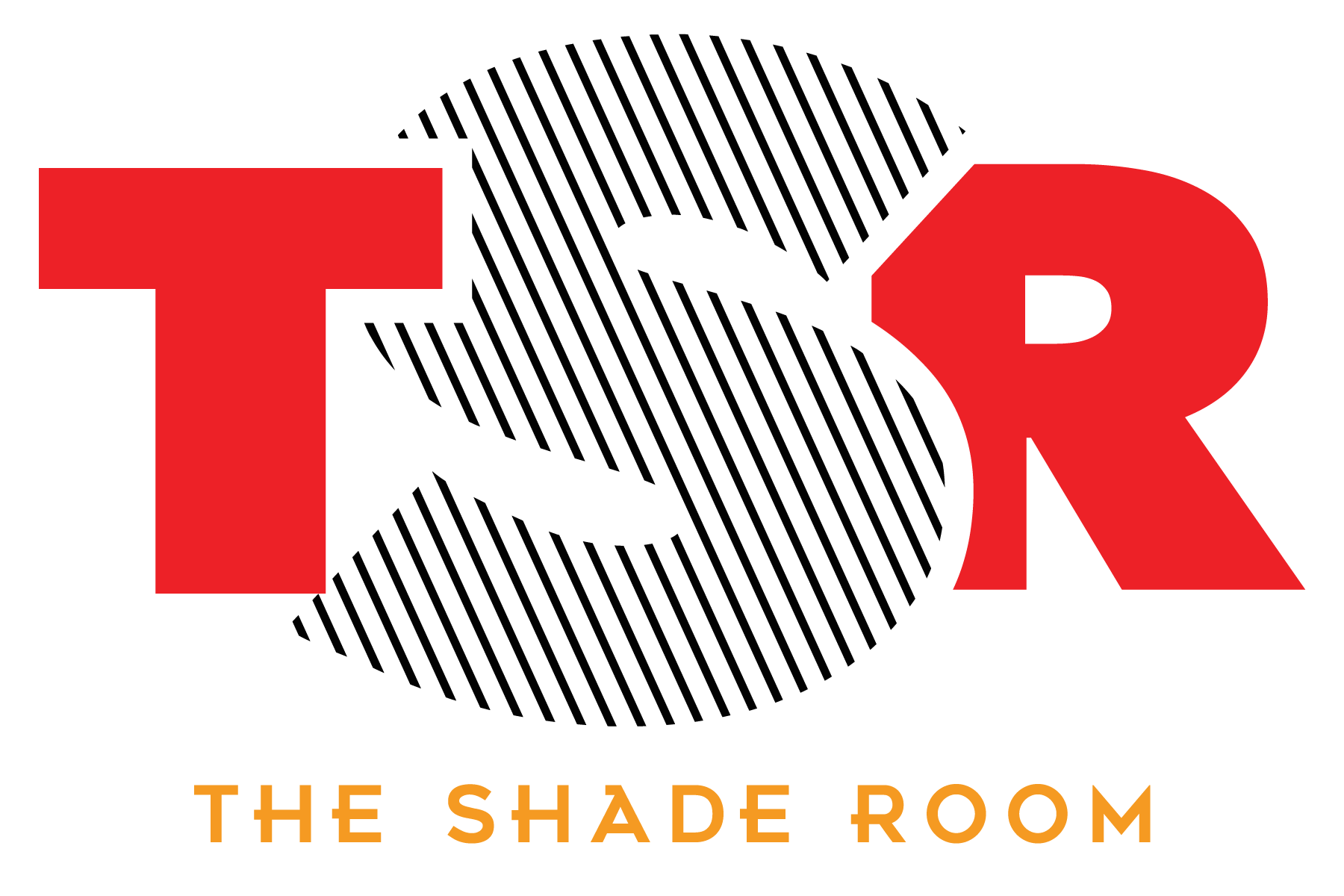
Introduction
Cryptocurrency, once a niche financial asset, has transcended its original purpose to become a transformative force across various sectors. One of the domains experiencing a significant impact is the realm of sports. The intersection of cryptocurrency and sports represents a groundbreaking advancement, offering novel opportunities and reshaping traditional paradigms.
Cryptocurrency Sponsorships and Partnerships
Cryptocurrency and sports sponsorship deals are reshaping the landscape of financial partnerships in sports. Athletes and sports organizations now have access to new revenue streams through partnerships with cryptocurrency companies. These collaborations enhance the visibility and legitimacy of cryptocurrencies within the mainstream sports landscape.
Fan Engagement and Monetization
Blockchain-based platforms enable the creation of fan tokens, allowing supporters to purchase digital assets tied to their favorite teams or athletes. These tokens come with exclusive perks, fostering stronger connections between fans and sports entities. Additionally, crypto sports betting platforms offer fans the opportunity to engage with sports events through betting using cryptocurrencies, adding an extra layer of excitement and engagement.
Innovation in Ticketing and Merchandising
Blockchain technology is revolutionizing ticketing systems, making them more secure and transparent. Additionally, sports teams can tokenize merchandise, creating digital collectibles for fans to purchase and trade. These innovations in ticketing and merchandising enhance fan engagement and provide new revenue streams for sports organizations.
Athlete Compensation and Welfare
Blockchain-based payment systems enable athletes to receive their salaries and endorsements in cryptocurrency, reducing transaction costs and providing greater financial autonomy. Transparent and tamper-proof contracts ensure fair treatment and timely payments for athletes. Moreover, crypto sports betting platforms offer athletes new opportunities for endorsement deals and participation in betting pools.
Sports Technology and Data Analytics
Blockchain-powered platforms are transforming the way sports data is collected, analyzed, and monetized. Decentralized data marketplaces allow athletes, teams, and fans to trade valuable insights securely. Smart contracts streamline processes such as player transfers, sponsorship deals, and broadcasting rights, enhancing transparency and efficiency.
Conclusion
The integration of cryptocurrency into the sports industry represents a paradigm shift with far-reaching implications. From sponsorship and fan engagement to ticketing and athlete compensation, cryptocurrency is driving innovation, efficiency, and inclusivity across all facets of sports. As blockchain technology continues to evolve, the synergies between cryptocurrency and sports will deepen, ushering in a new era of innovation, transparency, and empowerment for athletes, teams, and fans alike.
Technology
Co-Branded Marathon Series : marathon Series
Garmin has strategically partnered with five leading performance brands to enhance the participant experience for its newly launched Marathon Series. The collaborations bring together Brooks for running apparel, Dexcom for glucose monitoring, Maurten for sports nutrition, Shokz for audio gear, and Therabody for recovery technology. Garmin’s strategy of partnering with these brands will help create […]
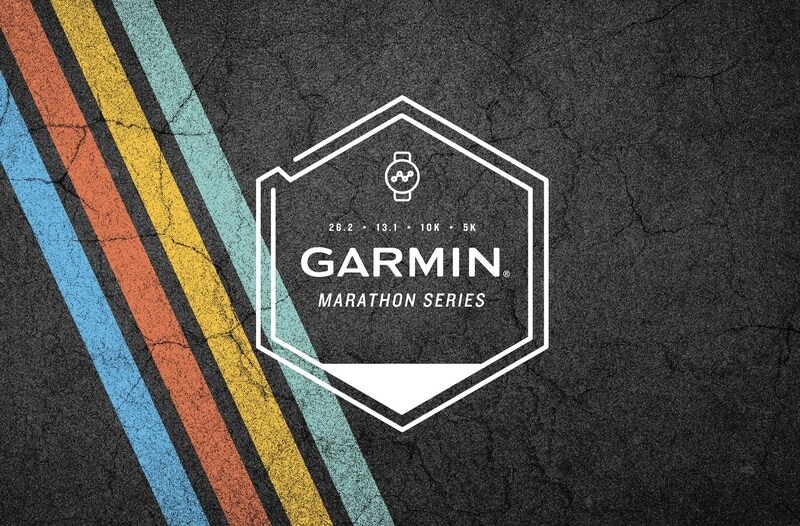
The collaborations bring together Brooks for running apparel, Dexcom for glucose monitoring, Maurten for sports nutrition, Shokz for audio gear, and Therabody for recovery technology. Garmin’s strategy of partnering with these brands will help create a comprehensive ecosystem of running-related products and services around the event. Each one of the companies will contribute specialized activations across pre-race expos, course support stations, and post-race festivals.
This multi-brand approach transforms the marathon series from a standalone racing event into an integrated performance platform where runners can access cutting-edge gear, nutritional support, health monitoring tools, and recovery solutions throughout their race journey. The Marathon Series’ inaugural events in Toledo and Tucson will serve as testing grounds for this collaborative model.
Image Credit: Garmin
Technology
Streaming Giants Enter the Sports Arena
Sports leagues are increasingly turning to tech companies like Apple, Amazon, and Netflix to inflate their media rights fees as traditional partners like broadcast and cable networks shrink. The leagues have sought larger paydays by dividing rights among a wider pool of bidders, and tech companies have the dry powder to make significant investments. This […]

Sports leagues are increasingly turning to tech companies like Apple, Amazon, and Netflix to inflate their media rights fees as traditional partners like broadcast and cable networks shrink. The leagues have sought larger paydays by dividing rights among a wider pool of bidders, and tech companies have the dry powder to make significant investments. This shift is hastening the demise of cable and satellite businesses, as streaming services become the new norm for live sports viewing.
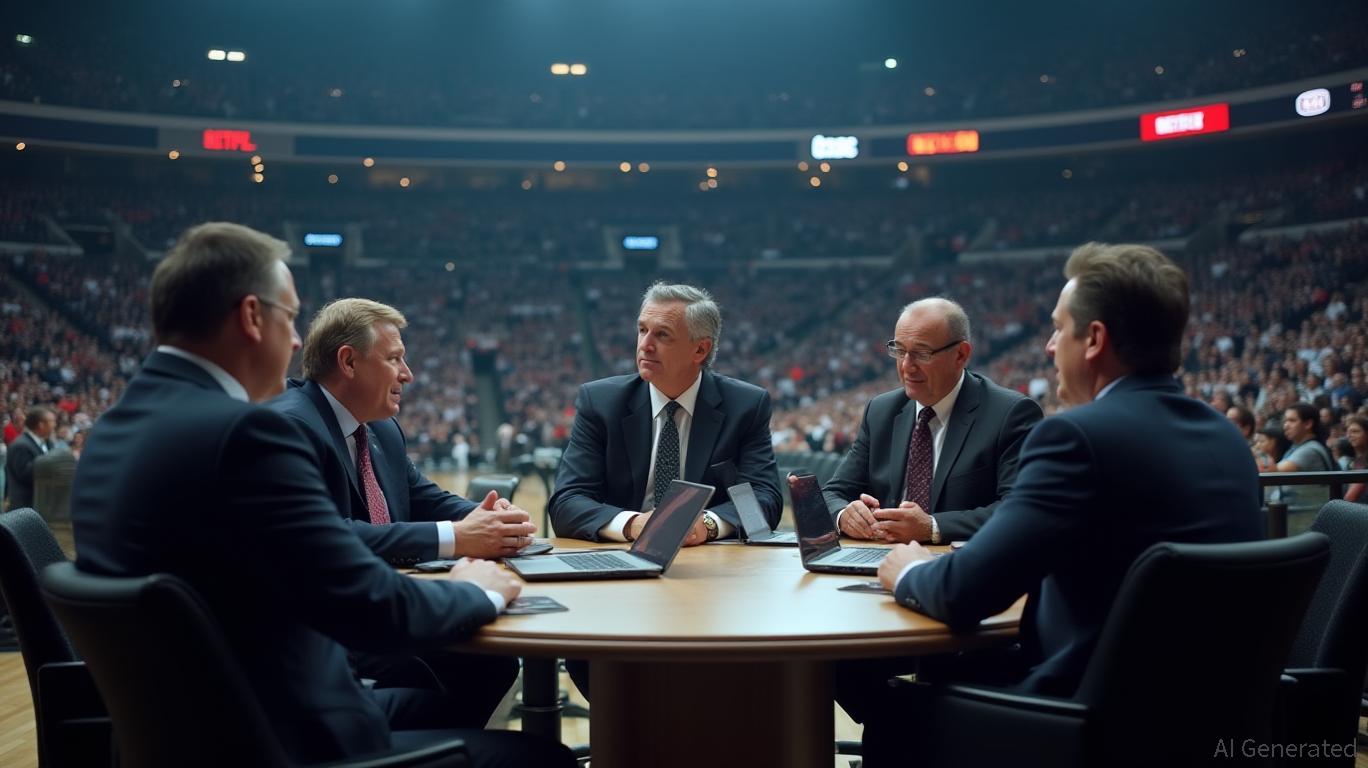
Technology
Feds mandate in-person interviews for overseas renewals
Amid furious debate among supporters of President Donald Trump over the H-1B visa for foreign workers, federal authorities are making in-person interviews mandatory for renewals in visa holders’ home countries. Technology companies say the visas — intended for workers with specialized skills, and requiring renewal every three years — are key to maintaining competitiveness, but critics […]

Amid furious debate among supporters of President Donald Trump over the H-1B visa for foreign workers, federal authorities are making in-person interviews mandatory for renewals in visa holders’ home countries.
Technology companies say the visas — intended for workers with specialized skills, and requiring renewal every three years — are key to maintaining competitiveness, but critics charge they are used to suppress wages and replace U.S. workers.
Currently, H-1B holders with no visa changes can drop off renewal applications at consulates in their home countries or foreign countries, or renew remotely through federal field offices in the U.S. Under the new rule, in-person interviews are required for overseas applications, and the option to renew in countries other than the applicants’ own appears to have been taken away. It was not immediately clear if an interview requirement would be imposed for renewals at field offices in the U.S.
Immigration lawyers expect the change, taking effect Sept. 2, will cause delays at overseas consulates and also in U.S. field offices.
“It was a really great process — if everything was the same there’s really no point in asking them all of those questions and having them coming in for an interview,” said Kelli Duehning, a partner in the BAL immigration law firm’s San Francisco office, who spent 17 years as a lawyer for U.S. Citizenship and Immigration Services.
Alternatively, at the discretion of federal authorities, H-1B workers could renew visas at U.S. consulates in other countries not their own, including Canada and Mexico, but Duehning believes the new rule eliminates that option.
U.S. Citizenship and Immigration Services referred questions about the new rule to the U.S. State Department. The department said visa applicants should check embassy and consulate websites for information about visa application requirements and procedures.
“An in-person interview with a consular officer overseas remains one of the most important tools for the Department of State to detect fraud, misrepresentation, and other indicators that an applicant is not qualified for the visa class sought,” the department said.
Thousands of H-1B workers, mostly Indian citizens, work at Silicon Valley technology companies. Visa holders have been reluctant to speak out on the issue, fearing it could jeopardize their status.
“We can only anticipate that the wait times at the consulates in India are going to get very, very long,” Duehning said. “If they don’t get an appointment in time, they could lose their work authorization.”
Most H-1B holders also can renew visas in the U.S., and Duehning expects the mandatory interview rule will boost the number of H-1B workers applying in this country, likely leading to delays in U.S. Citizenship and Immigration Services field offices.
“Their field offices are already overwhelmed,” Duehning said.
Meanwhile, federal hiring freezes and the departures of federal workers in the State Department and Citizenship and Immigration Services mean reduced staffing, even as the Trump administration heightens scrutiny of H-1B applications and renewals, Duehning said. Applications for renewals made overseas, and at field offices, are drawing increased numbers of “requests for evidence” that the applications are valid, Duehning said, similar to what occurred during the first Trump administration.
“It will continue to increase the lack of efficiency and consistency that businesses need for their foreign national workforce, and of course, just continues to increase the angst of foreign workers,” Duehning said.
Controversy over the H-1B visa exploded late last year, as anti-immigrant conservatives faced off against advocates from the tech industry who are close to Trump. The president — who in the past criticized the visa and oversaw a dramatic boost in denial rates during his first term — came out in support of the H-1B.
In Silicon Valley, Google, Meta and Apple are among the top users of the visa. Last year, Google received approval for some 5,300 new and continuing H-1Bs, according to federal government data. Meta received nearly 5,000 approvals, Apple close to 4,000, Intel about 2,500 and Oracle more than 2,000. Seattle’s Amazon topped the list, with more than 11,000. All told, nearly 80,000 workers were approved last year to work in the U.S. for about 10,000 California companies.
Technology
Ajinkya Rahane, who had a calm, composed, and dependable presence in the Indian batting lineup, is equally passionate about the dynamic world of entrepreneurship and start-ups.
Transcript Transcript Transcript Ajinkya, welcome to CNBC TV 18. Let’s first talk about Hadil itself, because that’s something which is also very close to you, close to sports. What was it that drew you to investing in huddle and you know, like being an entrepreneur there. So huddle is basically sports tech platform. And me, […]
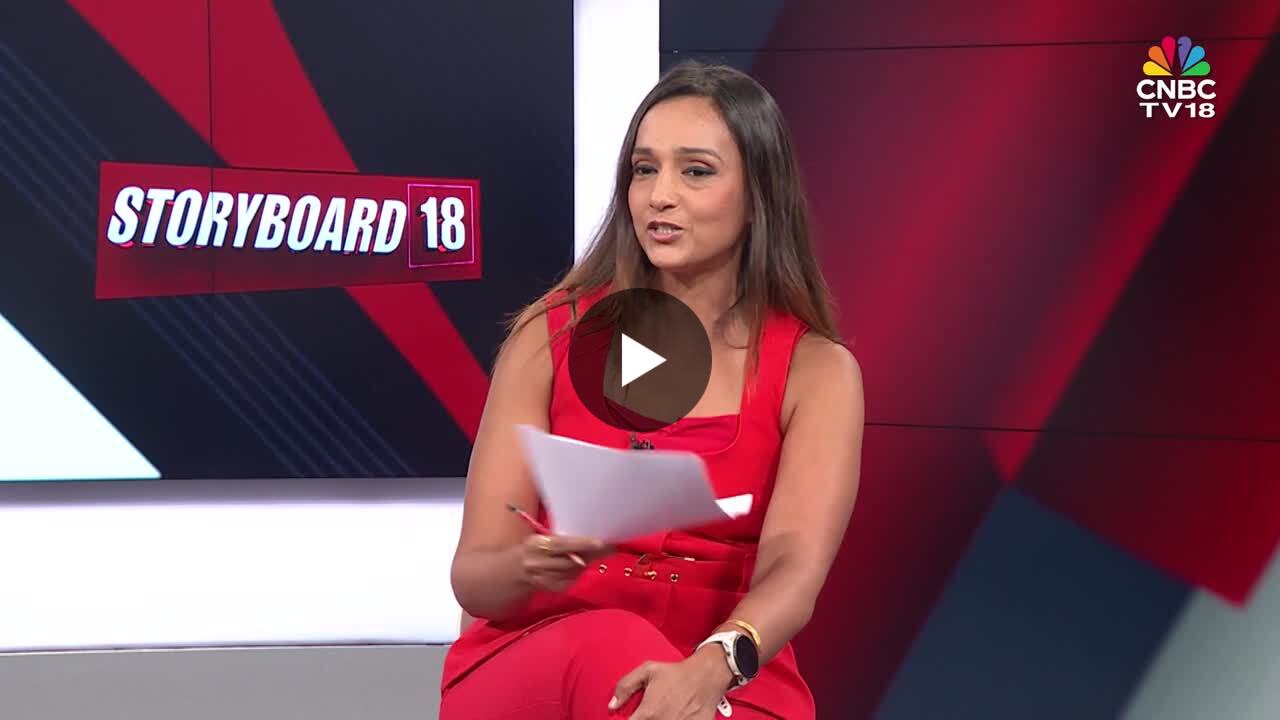
Transcript
Ajinkya, welcome to CNBC TV 18. Let’s first talk about Hadil itself, because that’s something which is also very close to you, close to sports. What was it that drew you to investing in huddle and you know, like being an entrepreneur there. So huddle is basically sports tech platform. And me, I’m a completely, I’m a passionate about, yes, about cricket, but I love playing other sports as well. And I used to watch people who are looking for, you know, when used to play sports, go outdoor and play sports. That’s when Hurdle actually we met. The founders and then we started our discussions and we start, we, we thought that hurdle will be a, a right platform, a right fit for me to get into it. So that I wanted to promote sporting culture in India. We invested in 2019 and then COVID happened. Everything was shut. Everything was closed for six to eight months. But then after lockdown opened up. People wanted to go outdoor and know and play outdoor sports. That’s when Hurdle actually was trying to help people to get access to outdoor facilities, to even indoor facilities so that people could actually go out and play sports. And that’s when I thought, no, this is a great platform for me to introduce people to different sports. You know, we know pickle ball paddle has been growing really well, but the main important thing was for me to know creating a sporting culture in India and try and promote that and how has. Your journey as a cricketer shaped or you know some of your insights as an entrepreneur? See, I like to firstly, whenever, whichever business I get into it, I like to meet the founders first. No, no, try and see their passion, their vision, what they want to achieve. If I, if I feel yes, this is the right venture for me, I get into it. But if I’m, if I invest something in that my time, you know the money as well. I like to take a back seat. For me it is always about, you know, give them that freedom. I always feel that in cricket we get lot of suggestions, pressure. On the people, but if people can allow us to know give that freedom, no, we can play freely. So similar thing I apply in my entrepreneur journey. I give freedom to our founders. But wherever I feel like I should jump in, I tried to be as frank as possible with them and no Sharma opinions. Yeah. So let the leaders be. And one of you know the great leadership skill that you demonstrated was during the Border Gavaskar Trophy in Australia. How did that? Or you know, tournament, specially when we saw like the Indian team was highly depleted at that point in time, shape you as an individual, as a leader that tournament, I thought that series was something really special. You know, for me, preparation is really important going into any series. I remember going into will talk about cricket now and going into Australia. We were in Dubai, you know, playing IPL and I got to know that I will be the captain after first Test match. You know, I thought, no, let me just study myself, no. And make some notes. I always make the notes before any serious. And I had 2-3 plans before going into Australia and that plan came together really well. No, it was always about playing with freedom. You know, Allah as a captain, allow my players to know, give that freedom, know. Open everything, I mean they can talk with me about their personal and professional life on and off the field. They can share everything with me. So it was always about that being a leader, you know, giving them that platform to express themselves. No try and motivate them and also no give them that freedom whenever we are on the field. Just I told them that go out there and back yourself back your game. Moving back to your entrepreneurial journey, Proggy IT solutions. What attracted you? To invest in proggy so my friends when they told me about proggy and know their proxies about making. Ohh helmets, smarter helmets, it is very easier and safer and also it’s connected now as I mentioned, no gadgets helmets, it’s all connected. You can talk to people wearing those helmets. It’s safer and also makes people’s job very easier. Quickie when we see people wearing those helmets when they’re working in the in the refineries mines, the safety protocols are really important and I thought these helmets provides that safety. No people can. Connect with each other. And also it has oxygen levels, It has no your BP levels. People can monitor sitting in the no closed, closed area and they can monitor your oxygen level and everything. So I thought from safety point of view, proxy was perfect for me. And that’s what my friend told me. And I thought, no, this is a great venture for me to get into it. Yeah. And apart from that, there is also an Agri tech startup that that you’re invested in. What attracted you to agriculture? Because we see like, you know. Plywood stars and cricketers typically interested in like, you know, high glam high, like, you know, consumer focused startups. So why agritech at all? See, I’ll tell you I’m, I’m into my entrepreneur journey and in business returns are really important. I have been invested in couple of the benches where returns are really high and I’m really happy for that. But agriculture is something really close to my heart. You know, I come from agriculture family. I’ve seen my grand grandparents walking into farms and how difficult it is. I thought if I can know. Contribute something to this sector, to the farmers, their lives. That will be really grateful. So that effort actually started from 2016 and 17. Hmm. I used to know, I used to help farmers from my own capacity and I thought if I can channelize that in a proper way with the organization, if they can help me. So I have tied up with MCI, they’re helping me. They’re director general Prashant Gilbane, Vikram, my close friend Vikram Sathaye and Amit Paranjape. They’ve been helping me a lot, no. Connecting or to aggregate sectors and know we are together, we are trying to help farmers directly and recently we have invested, no, I have invested in Krishak Mitra as well. But recently we have invested in Kane bought So through me, the other people who join me raising the funds which directly go to the farmers so that the farmers lives can be beneficial. So this sector is always about, it’s always about no getting an impact, creating an impact. It’s we are not looking for returns. Yes, returns are important, but it’s more of an impact. So that brings me to a very crucial question. How do you decide, you know, what do you want to invest in as an entrepreneur? As I said. For me, agriculture sector is always about making an impact, other sectors making money, as simple as that, as simple as that. No, I’m not going to lie. So are there any more impact making an impact, sectors that you’re looking forward to and making money, sectors that you’re looking forward to? My team is obviously working hard with all the sectors, all the benches, but we, we pick and choose. You know, I’ve invested in OT as well, which is again, a very healthy sector, you know, healthier way. I’ve tried oat milk in New Zealand in 2014. 15 hmm and I really liked it and this brand called OT no, they were starting this oat milk milk milk plant in India and I thought this is a perfect thing to promote it now, which has vitamins and minerals and very healthy very healthy being a sportsman, we got to be stay really healthy and fit. So I thought if I can promote this Indian local brand, why not something that you’re also passionate about is what you look forward to having said that before we go Ajinkya, I would like to ask you what. It would be your tip to like the first time founders were setting up their business. Since you speak to so many of them and you are actively investing in many of these companies, what would be your tip? I’ll tell you in cricket. That know now IPL started, everyone wants to play IPL, everyone wants to be successful, but it’s not easy at all. No, we only see the success story, but we don’t see, no people were not getting successful. The founders, I feel they know you should not think about the returns and the outcomes or you, you got to know build your venture or start up a Unicorn. There’s a you have to go step by step. I think firstly you got to be really passionate, resilient. No, that’s what I learned in cricket. And also your, your attitude towards your, towards your venture, it’s really important.
-

 Health1 week ago
Health1 week agoThe Women Driving A New Era In U.S. Ski & Snowboard
-

 High School Sports2 weeks ago
High School Sports2 weeks ago100 days to men's college basketball
-

 Technology2 weeks ago
Technology2 weeks agoAlly Runs New Game Plan in WNBA All-Star Rookie Debut
-

 NIL2 weeks ago
NIL2 weeks agoESPN Announces 'dont wait run fast' by mgk as New College Football Anthem for 2025
-

 College Sports3 weeks ago
College Sports3 weeks agoBYU Basketball Adds Aleksej Kostic to 2025
-

 College Sports2 weeks ago
College Sports2 weeks agoCity rows to sporting destination goal on boats of new complexes & old strengths
-

 Health2 weeks ago
Health2 weeks agoTrump administration investigates Oregon's transgender athlete policies
-
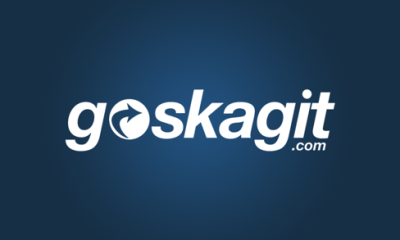
 Sports2 weeks ago
Sports2 weeks agoNtekpere honored as Second Team Academic All-American | APG State News
-
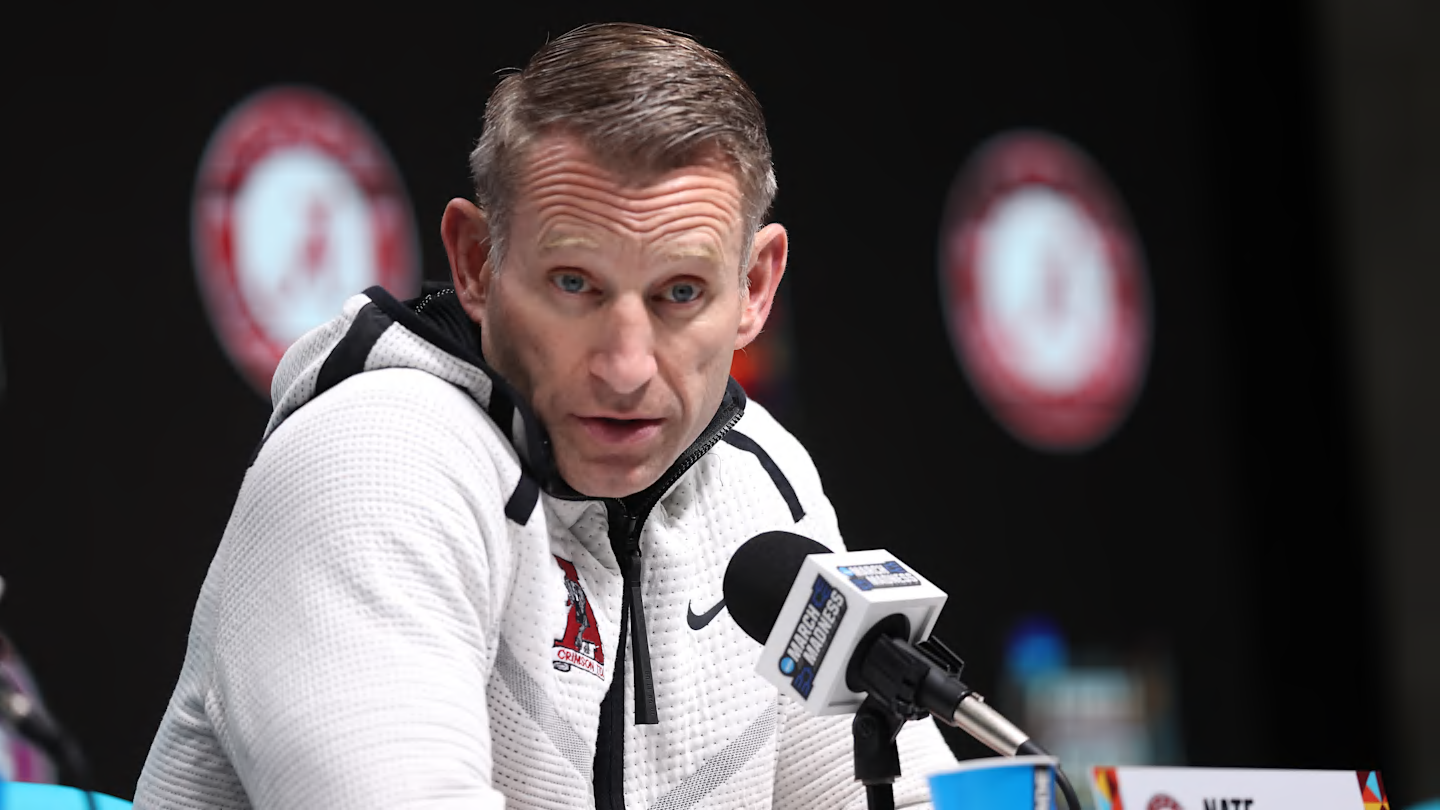
 NIL3 weeks ago
NIL3 weeks agoWill Alabama Basketball truly be only the SEC’s fifth-best team?
-

 Sports2 weeks ago
Sports2 weeks agoMore State Schools of the Year































